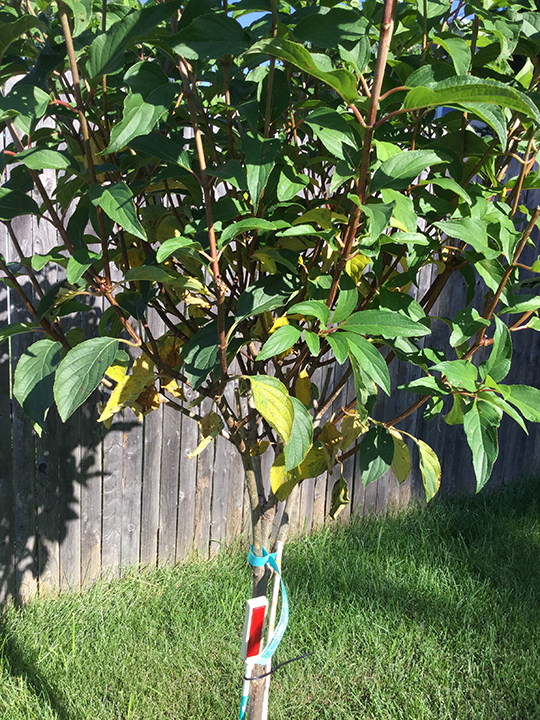Not known Details About Hydrangea Leaves Turning Yellow
Indicators on Hydrangea Leaves Turning Yellow You Need To Know
Table of ContentsAbout Hydrangea Leaves Turning Yellow3 Simple Techniques For Hydrangea Leaves Turning YellowThe Only Guide to Hydrangea Leaves Turning YellowHydrangea Leaves Turning Yellow Things To Know Before You BuyHydrangea Leaves Turning Yellow Fundamentals Explained
As you seen in the area above this can be brought on by underwatering. However, overwatering can additionally create dehydration, as counterproductive and weird as that might appear (Hydrangea Leaves Turning Yellow). Overwatering can choke off oxygen to the origins, which your houseplant needs to endure. The damp water-soaked soil will certainly additionally mean plant roots will begin to pass away as root rot holds.Therefore the plant comes to be dried despite the fact that it is resting in a wealth of water. Decaying roots will certainly turn glossy and black with a mushy texture and a decomposing odor. The leaves of your hydrangea might drop off, and the ones that are still connected will be yellowed or brown and be mushy at the stem.

Without your intervention, those fallen leaves will promptly turn brown, after that black as they melt. Where you put your hydrangea matters a lot if you desire your plants to preserve its full deepness of shade and have appealingly green fallen leaves. SIf your hydrangea is an indoor plant in your house then you will likely have an option of 4 window directions: north, south, east, and west.
Hydrangea Leaves Turning Yellow - The Facts
Hydrangea getting excellent light, Straight sunshine for hydrangeas is proper in the morning. When the mid-day sun strengthens, the direct light is as well scorching, so give indirect light to partial shade. Spotted shade is one more option. Allow me to explain a few of these "light" terms. Straight light is the type of light a plant obtains when it sits directly in the sun.
Spotted shade means your hydrangeas have above cover, such as a larger tree or plant. The sun comes with straight, yet the cover of the bigger plant enables the sunshine in only occasionally via the openings in the branches or leaves. Hydrangeas can expand in straight sunlight as long as they are well watered a sprinkled frequently.
Photosynthesis, as most of us know, is crucial for plant survival, so chlorosis needs to be treated quickly. Hydrangea Leaves Turning Yellow. While chlorosis can be triggered by other nutrient deficiencies, it is most generally an iron shortage. In the complying with area you will discover how to recognise whether your plant has an iron shortage or another thing
First shows up on the older leaves, yet the fallen leave capillaries remain eco-friendly. A magnesium shortage appears initially on old leaves and should not be puzzled with an iron shortage [Photo: izzzy71/ Shutterstock. com] While there is useful link typically adequate more tips here iron in all-natural soil, hydrangeas frequently have a hard time to take in enough of it.
Hydrangea Leaves Turning Yellow for Beginners
The most effective method to stop iron deficiency-chlorosis in hydrangeas is to plant them in suitable ericaceous or acidic dirt. When growing in a bed, mix in some peat or reduced-peat ericaceous compost and check the p, H worth as soon as a year. This is essential since the compost blend around the plants will affect the p, H worth of the soil over time and the p, H value may climb once again.
It is just utilized on a commercial range, where a long term iron deficiency would indicate significant return losses. The special fertilisers for this are commonly pricey and require to be used in very precise dosages to prevent damage to the leaves. Foliar fertilisation is only effective for a short period and needs to be used frequently or supplemented by typical iron fertilisation.
Input More hints your search keyword phrases and press Enter.
We're appropriate in the middle of our late-blooming hydrangea season here, so I assumed I would certainly share a tip for this certain kind of hydrangea that I found really interesting. A great deal of people have a similar issue with their panicle hydrangeas where they start to see the fallen leaves transforming yellow and handing over at various parts of the period and it can be pretty significant and pretty concerning due to the fact that it can take place truly rapidly on a bush that feels like it's or else truly healthy and balanced.
The Of Hydrangea Leaves Turning Yellow
I've shared it on Instagram before, yet I recognized I have actually never ever told you about this in a genuine, full article, so today I'm taking treatment of that. When I say that this uses to panicle hydrangeas, that implies the kind of hydrangeas that usually grow later on in summer season, usually around August.

If you truly wish to optimize flowers, a (the middle number) will truly assist enhance the number and size of your flowers. You must see the number of newly-yellowed fallen leaves reduce quite swiftly as quickly as you provide your hydrangea the food it needs. Fortunately is that if you do definitely nothing, the plant will still be fine, it will just have a couple of less fallen leaves.
Courtenay is the writer of guide The Cleaning Ninja and has actually been included in various publications consisting of Nation Sampler Farmhouse Design, Better Houses and Gardens, Parents Magazine, Real Simple, and Our Homes.
The Facts About Hydrangea Leaves Turning Yellow Revealed
The areas develop because of water drops from rain or irrigation that rest on fallen leaves throughout hot and humid problems. This is particularly true in big plant baby rooms and domestic or business landscapes that utilize overhanging irrigation regularly. When using above watering it is best to water in early to mid morning so the sun can dry out the water from foliage.